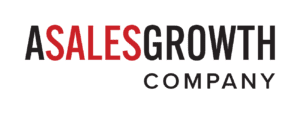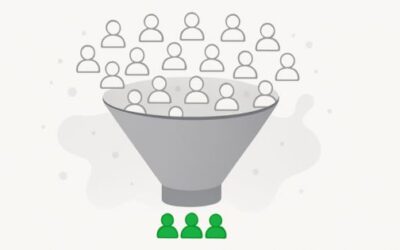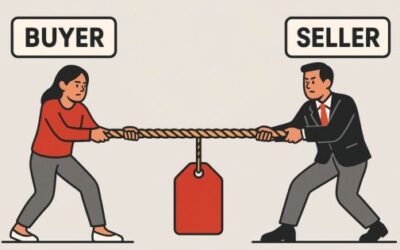Number 1 Sales Discovery Mistake
You don’t define everything. That’s the number one problem during sales discovery calls. Everybody thinks they do a discovery but defining everything is the most important part of discovery. If you don’t define everything then you’re just collecting high level superfluous stuff that you can’t actually use to leverage in the sales cycle.
Avoiding Superficial Discoveries: Dig Deeper
There’s no secret sauce, algorithm, great sales discovery questions template or best sales discovery questions cheat sheet. You just need to be curious and learn to define everything.
So what do I mean by define everything? Most of you accept in your sales calls things like we’re not growing fast enough, we’re not getting enough leads, it takes too long to close a deal, we can’t get enough product out the door, we can’t get enough inventory on time, we’re not getting the return we want in our marketing spend, we can’t get enough patients through, we don’t have enough supplies on hand, we don’t have enough profitability, etc. You all just accept that.
Trust me, I’ve talked to thousands of you and when I ask you what’s going on in the account -that’s the bullshit you feed me. That’s what you get out of your discoveries and it doesn’t tell you a thing. If someone says they’re not making enough revenue what does that tell you? You have no idea. What does enough revenue mean? How do you define enough revenue?
They say you can’t get patience through, what does that tell you? Not a damn thing. How many patients can’t they get through? How many they need to get through? What’s the cost of each patient? What happens if they don’t?
You leave way too much stuff on the table.
Case Study: Uncovering Hidden Opportunities in Sales Discovery
I want to give you an example and what I mean by this in the most subtle way and how you can benefit from it. I’m working with a client now, they sell to colleges and universities. One of the accounts we’re working on right now is an Ivy League school. I won’t tell you the name but it’s one of the big ones. What this client of mine does is they help universities improve their application rates, their enrollment rates, and their yield rate. They do this by providing a better online experiences for the university.
Now people that can’t visit the universities or they can’t go to the school because of Covid or there’s less of a chance to do an onsite visit. This company creates these interactive experiences on the University’s websites to help prospective students get a feel for them. They’re working with this one Ivy League school who’s currently not having this problem they’re because they’re an Ivy League and they’re one of the best right. They’re not having a problem with the number of applications coming in, they’re not having a problem with enrollment, their acceptance rate is somewhere between five and seven percent, it’s ridiculous. They’re not having a problem with their yield rate.
Asking the Right Sales Discovery Questions
So, why would they buy? Why are we here talking? My client told me the university told him they’re concerned that their website is falling behind or their interactive element is not as good as the other Ivy League schools and they’re concerned about “their future brand recognition and their future brand reputation.” He accepted that. I asked him two simple questions: define reputation and define future. He said I don’t know. I asked, so when are they concerned that this reputation could be in trouble 6 months, a year, 18 months, 24 months, 3 years, 5 years? When do they think their reputation could be in trouble? Again, he said I don’t know.
All of that matters to the sale doesn’t it? 100% it matters to the sale. If it’s in six months then there’s a sense of urgency. If they’re concerned about two years down the road and there’s not a sense of urgency why are they going to spend this kind of money? Then I asked – how are they defining brand reputation, how will they know it’s been negatively affected, what will transpire? Will applications go down, will they slip in the U.S. World News Report rankings, will they get less people accepting enrollment, will their yield go down? How will they know? Again, he said I don’t know. Well then you haven’t done a good discovery.
If any of those numbers are the number one reason that they are thinking about buying and they’re concerned about their future brand reputation but you don’t know how they’re defining future and you don’t know how they’re defining their brand reputation how can you influence the sale? How can you have any influence on the sale at all? You’re an order taker.
This is what you all do, so I want you to think about this – go back and look at all your opportunities. Have you actually defined the problems? Do you know what you’re actually trying to fix? Can you measure it? The best sales discovery process starts with the right questions.
Creating Value and Building the Gap
And here’s my final tip. This is when you know you’ve gotten good information in a discovery -you can leverage the information to influence the sale. I will say that again -the best sales discoveries allow you to leverage the information you get from the questions to influence the sale. We’re not growing fast enough, we can’t produce enough product, our product costs are too high, our shipping costs are too high, it takes too long to get things out the door, we’re not getting enough leads – you can’t use those to leverage the sale. You don’t know how they’re defined.
When someone goes dark or someone is pushing back or they’re arguing on price you can’t say well you said your shipping costs are too high. There’s not enough information there to get the buyer to agree that you have good point.
Now, if they said our shipping costs are too high, we’re paying two million dollars a year more in shipping costs that we prefer or that we budget for, and your product or service can reduce those shipping costs by 1.5 or 2 million and it only cost $80,000 a year – now you’ve got information you can leverage.
“You said you’re spending 2 million dollars or more a year on shipping costs than you budget for or than you should be, we can help you get that under control and get that down by 1.5 million and it only cost eighty thousand dollars a year, why have I not heard from you? Why have you not gotten back to us?” Now you could push back and say why do you think we’re too expensive? Now you’ve got leverage.
To do the best sales discovery you need to define everything – it’s where the leverage comes from. It’s how you create the value in your sale. It’s how you build the Gap. No definition, no Gap, no sale.
If you want to start defining everything better for yourself, start here.
If you want to your sales team to be masters at defining everything, reach out to our sales team and ask about sales discovery training.





0 Comments